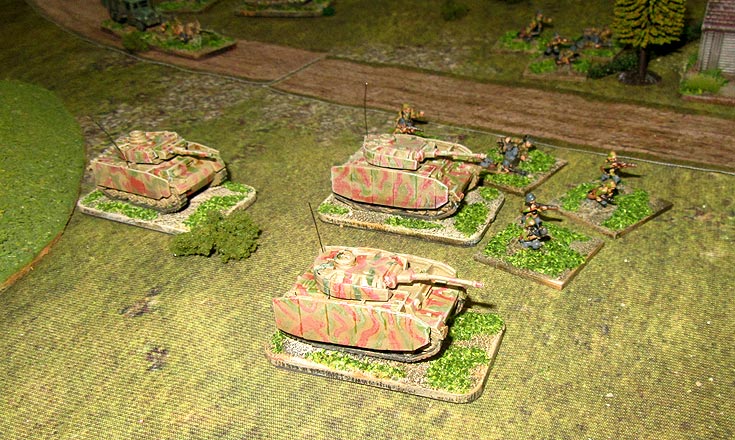
The Battle for Okhtyrka 1943
16th January 2025, 3 Comments
The Second World War, Rapid Fire Reloaded, 10mm
Its very unusual that we play two similar games back to back. Still, as I said last week we’re trying out different rules sets for our 10mm WW2 kit. Last week it was Iron Cross, while this time it’s Rapid Fire Reloaded. Now, I haven’t played Rapid Fire since the 90’s, but I was impressed by its new manifestation, as a small (A5) rule book, with a slick, simple system, which, we thought might well work for 10mm as well as 20mm. 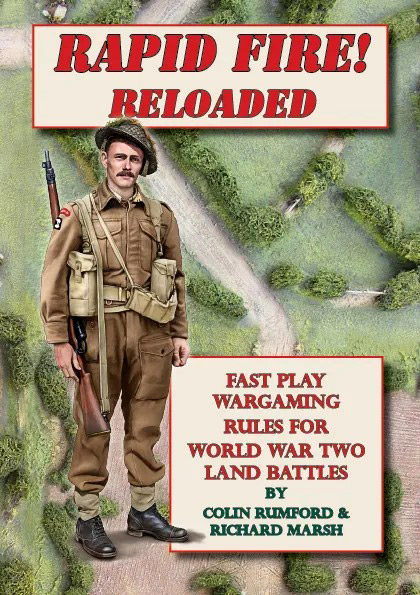 In this game, it was all about capturing the town of Okhtyrka in the Ukraine, about 60 miles north-west of Kharkiv (Kharkov). In this game, Sean’s Germans were sending a reinforced infantry battalion to seize it before the advancing Russians got there. The Soviets though, were doing exactly the same thing in reverse – with a similar-sized force. So, it was all about capturing the town. Both sides entered from opposite diagonal corners of our 6×4′ table.
In this game, it was all about capturing the town of Okhtyrka in the Ukraine, about 60 miles north-west of Kharkiv (Kharkov). In this game, Sean’s Germans were sending a reinforced infantry battalion to seize it before the advancing Russians got there. The Soviets though, were doing exactly the same thing in reverse – with a similar-sized force. So, it was all about capturing the town. Both sides entered from opposite diagonal corners of our 6×4′ table. 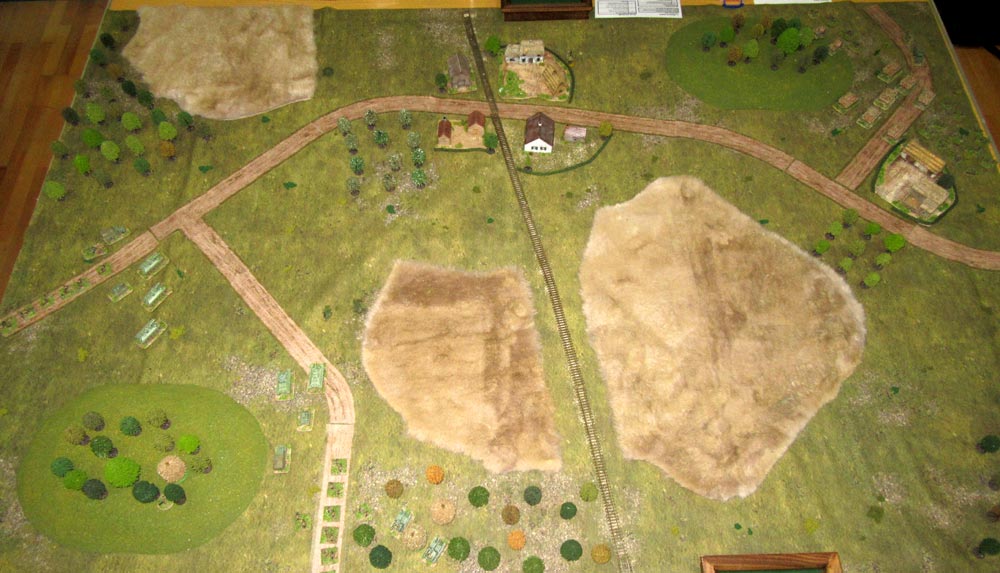 The countryside was fairly open, apart from a few hills, some large cornfields, a couple of orchards and a scattering of woodland. In this, looking from the north to the south, the Soviets were coming on from the north-east (bottom left above) and the Germans from the south-west (the top right).
The countryside was fairly open, apart from a few hills, some large cornfields, a couple of orchards and a scattering of woodland. In this, looking from the north to the south, the Soviets were coming on from the north-east (bottom left above) and the Germans from the south-west (the top right). 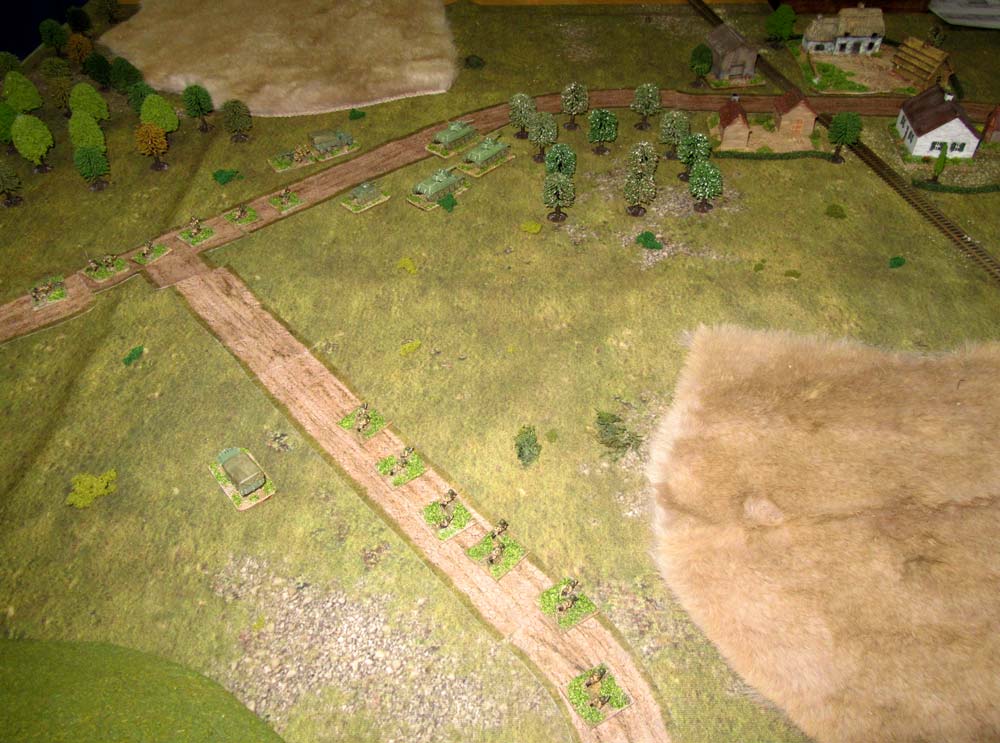 While each of us had an infantry battalion, we also had a fair bit of armour – two companies a side (4 T-34s and 2 T70s vs 6 Pz IVs & 1 PzIII), plus a company of tank destroyers (2 SU76s vs 2 Marder IIIs). Oh, and as we were testing the rules, both sides had an artillery observer team (OP), with a radio link to a battery of mortars. So, off Sean and I went, on the open road to Okhtryka!
While each of us had an infantry battalion, we also had a fair bit of armour – two companies a side (4 T-34s and 2 T70s vs 6 Pz IVs & 1 PzIII), plus a company of tank destroyers (2 SU76s vs 2 Marder IIIs). Oh, and as we were testing the rules, both sides had an artillery observer team (OP), with a radio link to a battery of mortars. So, off Sean and I went, on the open road to Okhtryka!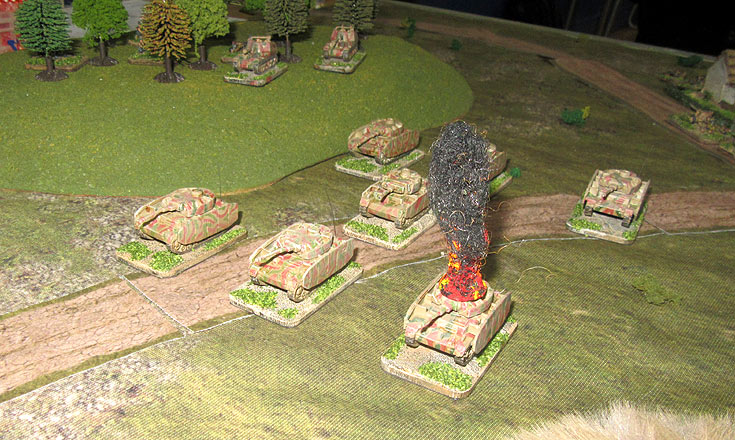 As we were using the movement, observation and firing ranges as written in the rules (which are really for 20mm figures), both sides spotted each other pretty much as soon as we entered the table. the rival tanks traded long-range shots, and against the odds one of my T-34s brewed up the first kill of the game – a PzIV. So far so good – it seems we’d both figured out the anti-tank rules fairly swiftly.
As we were using the movement, observation and firing ranges as written in the rules (which are really for 20mm figures), both sides spotted each other pretty much as soon as we entered the table. the rival tanks traded long-range shots, and against the odds one of my T-34s brewed up the first kill of the game – a PzIV. So far so good – it seems we’d both figured out the anti-tank rules fairly swiftly. 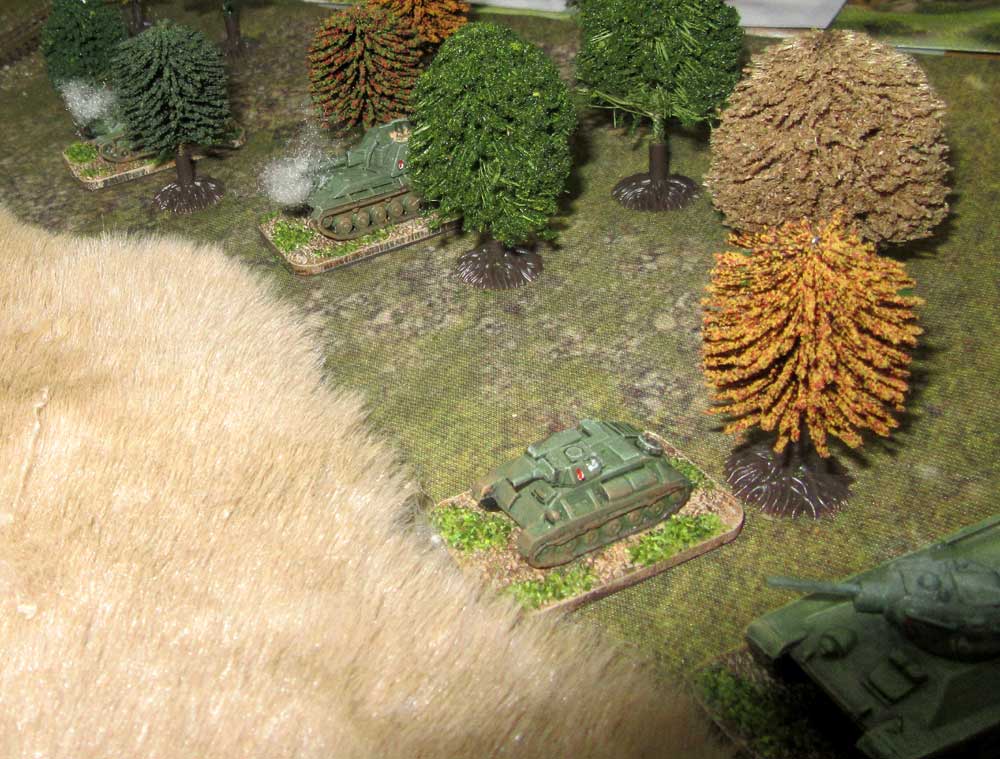 Then, when I lost a T-34 I backed the rest of the company into a nearby wood, next to the pair of SU-76s which had just trundled into position,. For his part Sean did the same on a wooded hilltop on the far side of the table, siting his pair of Marders there.
Then, when I lost a T-34 I backed the rest of the company into a nearby wood, next to the pair of SU-76s which had just trundled into position,. For his part Sean did the same on a wooded hilltop on the far side of the table, siting his pair of Marders there. 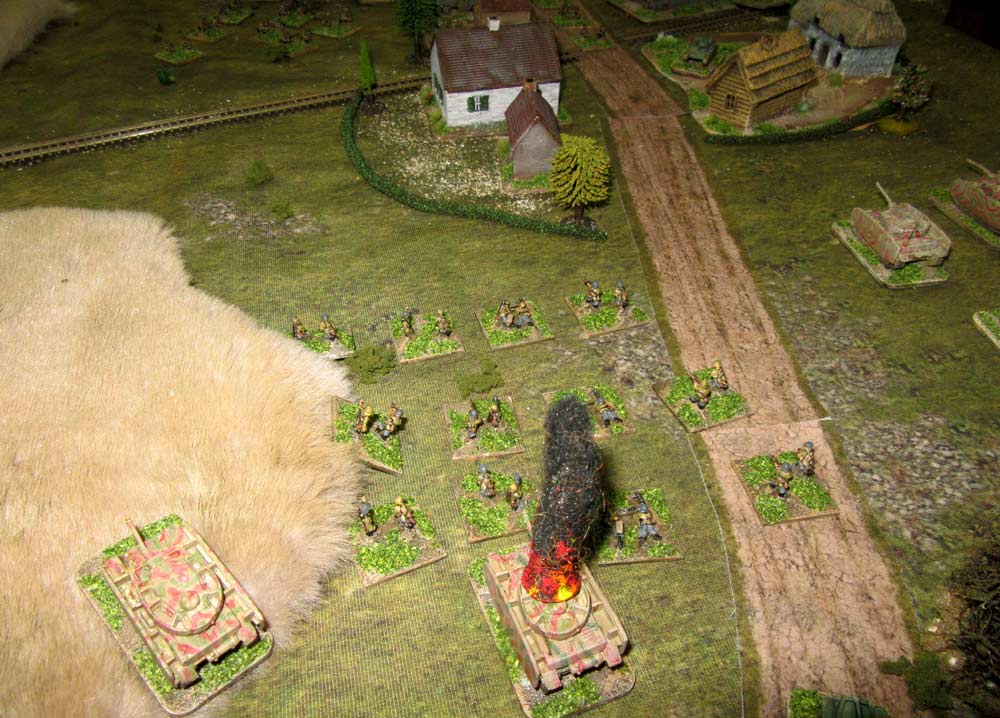 The panzers’ job was to protect the German infantry battalion – dismounted panzer grenadiers – who were advancing on the town from the west. Both sides then, had deployed a tank company and their tank destroyers to protect their open flank, while the second tank company moved up to offer direct support to the infantry.
The panzers’ job was to protect the German infantry battalion – dismounted panzer grenadiers – who were advancing on the town from the west. Both sides then, had deployed a tank company and their tank destroyers to protect their open flank, while the second tank company moved up to offer direct support to the infantry.  Meanwhile, the Soviet infantry were heading into town too, along the axis of the eastern road. The tank fight was pretty brutal. The panzers and the Soviet armour in the wood were within medium range of each other, and losses mounted – one of the SU76’s was taken out by a Marder, and its partner damaged, while the Germans eventually lost their entire company of three Pz IVs. This though, was something of a sideshow.
Meanwhile, the Soviet infantry were heading into town too, along the axis of the eastern road. The tank fight was pretty brutal. The panzers and the Soviet armour in the wood were within medium range of each other, and losses mounted – one of the SU76’s was taken out by a Marder, and its partner damaged, while the Germans eventually lost their entire company of three Pz IVs. This though, was something of a sideshow. 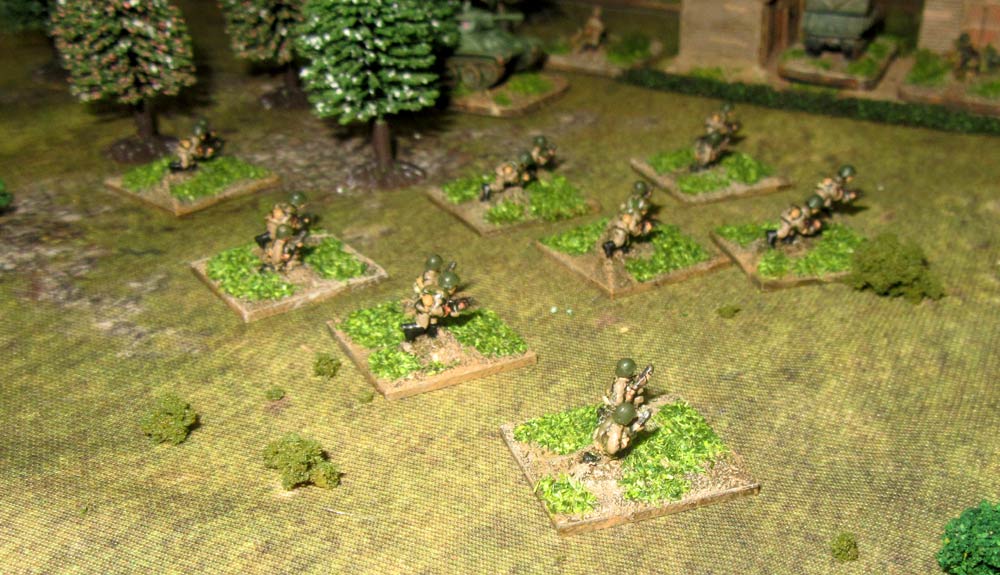 The real action was in downtown Okhtyrka, where both sides were now entering the town from opposite ends. Yes, I know, these are all SMG-armed troops, but I was out of rifle-armed figures when I based them up. In Rapid Fire Reloaded (RFR), a typical battalion has three rifle companies, each of four stands of two figures. They’re supported by a heavy weapons company with mortar and machine gun stands, and led by the CO’s command stand.
The real action was in downtown Okhtyrka, where both sides were now entering the town from opposite ends. Yes, I know, these are all SMG-armed troops, but I was out of rifle-armed figures when I based them up. In Rapid Fire Reloaded (RFR), a typical battalion has three rifle companies, each of four stands of two figures. They’re supported by a heavy weapons company with mortar and machine gun stands, and led by the CO’s command stand.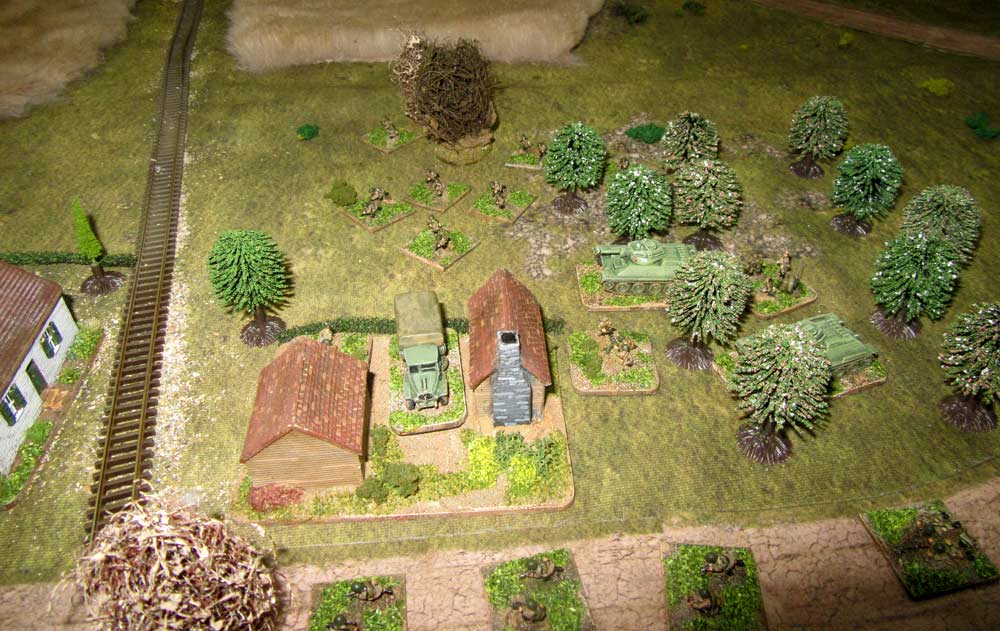 By this stage both sides were in the town, the Soviets advancing past an orchard to occupy its eastern side, coming under off-table mortar fire as they advanced – that’s the big puffball of dirt in the bottom left. The trouble was, the panzer grenadiers were doing the same on the far side of town.
By this stage both sides were in the town, the Soviets advancing past an orchard to occupy its eastern side, coming under off-table mortar fire as they advanced – that’s the big puffball of dirt in the bottom left. The trouble was, the panzer grenadiers were doing the same on the far side of town. 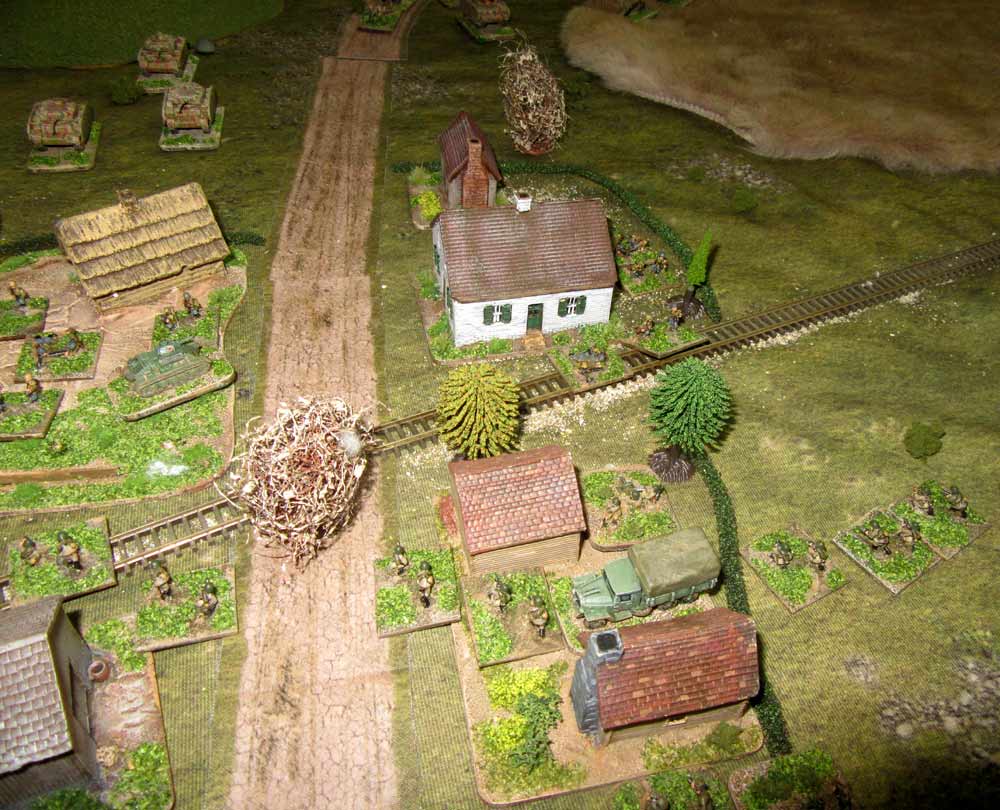 The strange thing was, the tankers on both sides pretty much decided not to enter the town. Instead they loitered around the back of it, giving moral support, and standing by for the enemy tanks trying to do something adventurous. that didn’t happen though, so the fight was purely an infantry one.
The strange thing was, the tankers on both sides pretty much decided not to enter the town. Instead they loitered around the back of it, giving moral support, and standing by for the enemy tanks trying to do something adventurous. that didn’t happen though, so the fight was purely an infantry one. 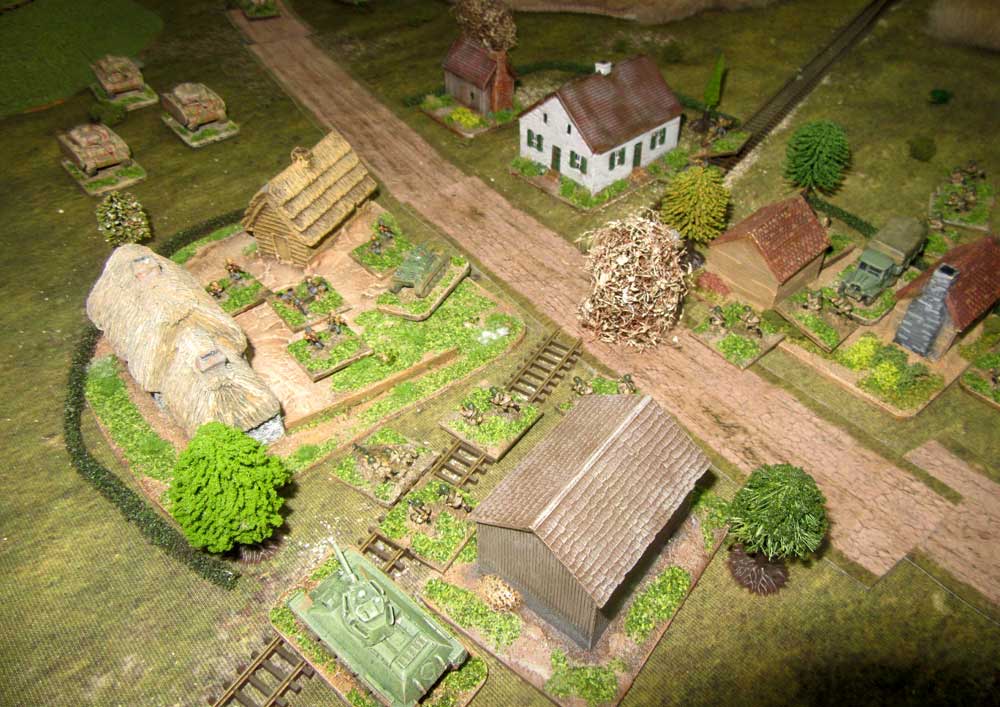 Oh, the exception to what I said above was a Soviet T70 platoon, which parked itself in the south-west corner of the village, and soon found itself without any support. the mortar barrage continued though, with both sides lobbing shells into the fray. The railway line was now the front line in Okhtyrka. We both tried close assaults, which the Soviets lost, but the attrition went both ways, as a German attack was repulsed with heavy losses.
Oh, the exception to what I said above was a Soviet T70 platoon, which parked itself in the south-west corner of the village, and soon found itself without any support. the mortar barrage continued though, with both sides lobbing shells into the fray. The railway line was now the front line in Okhtyrka. We both tried close assaults, which the Soviets lost, but the attrition went both ways, as a German attack was repulsed with heavy losses. 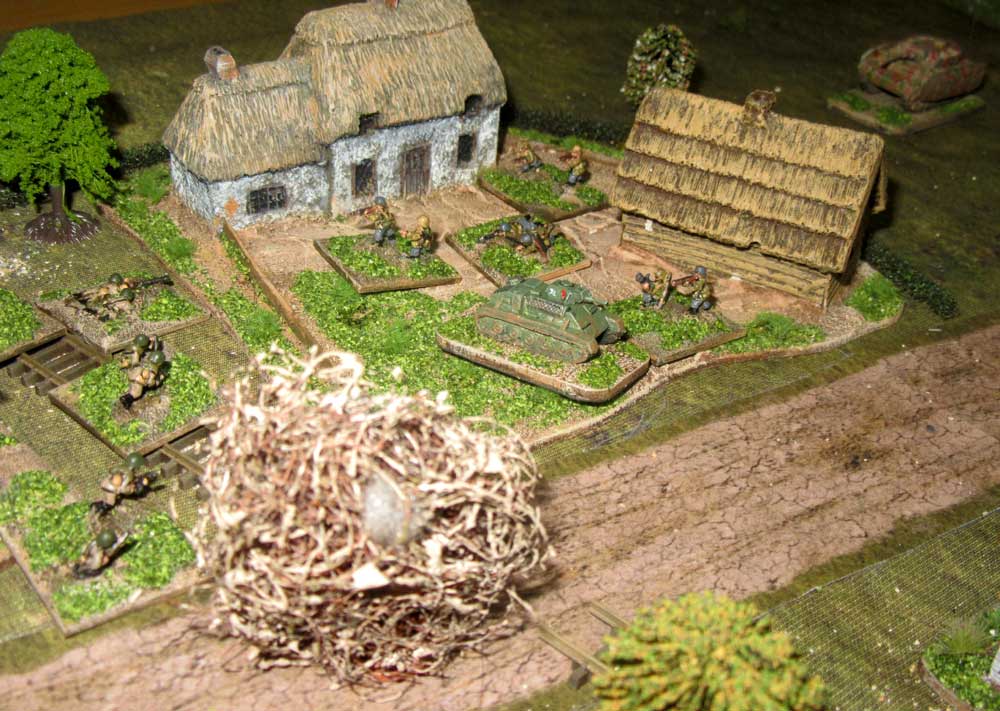 So, that’s where we stopped the game – a stalemate, with both Germans and Soviets lacking the strength to capture the rest of the town. Above all else though, this was about testing the rules. By the end, both Sean and I were really pleased with the way RFR played. The system was easy to pick up, and it played smoothly. We’re impressed, and we’ll certainly use RFR again. In fact, I’d probably go as far as saying they’re my current favourite WW2 set!
So, that’s where we stopped the game – a stalemate, with both Germans and Soviets lacking the strength to capture the rest of the town. Above all else though, this was about testing the rules. By the end, both Sean and I were really pleased with the way RFR played. The system was easy to pick up, and it played smoothly. We’re impressed, and we’ll certainly use RFR again. In fact, I’d probably go as far as saying they’re my current favourite WW2 set!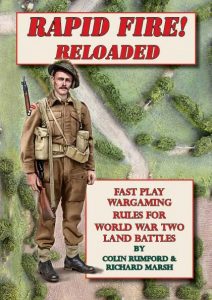
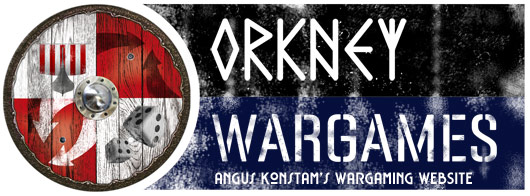
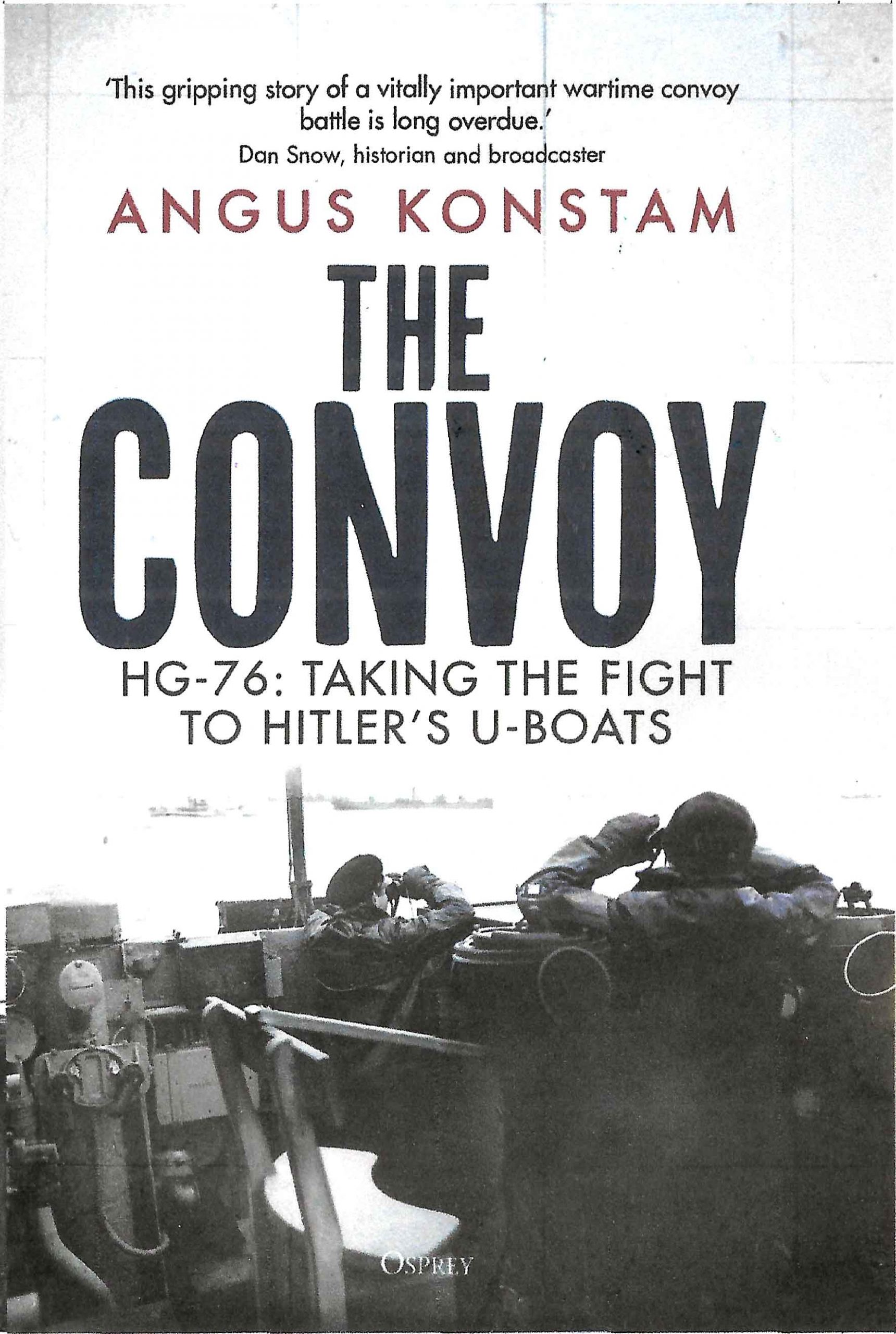
Hi Angus. We used these rules at the Cirencester club last year for a WW2 campaign. They do play easily, but they didn’t float my personal boat much, I’m afraid. The artillery rules felt too much like ordinary direct fire, for example. And that strange rule about having to destroy the houses in a BUA before hitting any of the troops inside. But they can be fun to play, no doubt.
I almost picked these rules up at Overlord, the Abingdon Wargames club show. I was undecided as I didn’t have much to go on. Maybe next time.
There’s always next time – or get ’em online for a fiver.
they work surprisingly well, for such a small booklet, and above all they’re good fun.